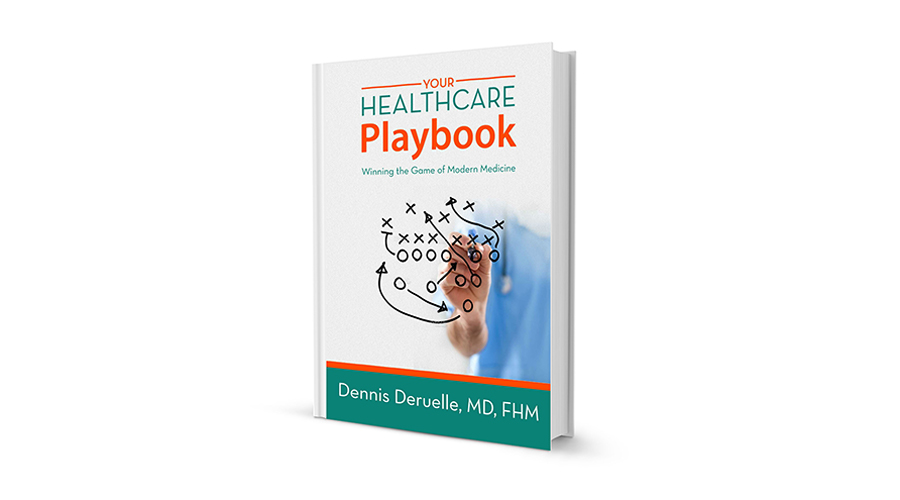By Dr. Dennis Deruelle, MD, Vice President, National Medical Director, BPCI for TeamHealth.
If patient-centered care is the current winning game plan for health care, then shared decision making (SDM) is the secret weapon. But we physicians need a new way to approach it.
SDM, as defined by the Society for Medical Decision Making, is “a collaborative process that allows patients and their providers to make health care decisions together, taking into account the best scientific evidence available, as well as the patient’s values and preferences.”
Multiple studies have verified the value of SDM in improving the quality of care and the patient experience, not to mention patient engagement. The problem is decisions are no longer between patients and providers. Health care today is a fragmented fray of “teams of teams.” And for all the knowledge and research on SDM, we need solutions for this new reality.
The new SDM team
The team around patients is growing, and that growth significantly impacts shared decision making. SDM must expand its horizons to move from a one-to-one to a many-to-many framework.
Consider, for example, the increasing role of patients’ caregivers. According to the National Alliance of Care Giving and AARP, there are 43.5 million caregivers in the U.S. An AARP survey found these tireless advocates spend 24.4 hours a week rendering care. Patients need these members of the team to execute the elaborate instructions and game plans we physicians devise, most importantly after discharge. If they are not part of the decision making and able to add their keen insight, someone may drop the ball.
Additionally, there are more health care professionals involved in patient care than ever before. An analysis conducted by Medco Health Solutions found that one in four seniors receive prescriptions from five or more doctors, and one in 20 from eight or more doctors. Have you ever counted the number of health care professionals that enter a hospital room on any given day? During a recent talk by the esteemed physician and author Atul Gawande, he related 66 unique individuals entering a patient’s room during their stay. In addition to physicians and nurses, now coaches, navigators, and coordinators have joined the mix. To complicate matters, shared decision making requires time: something that often seems to be in short supply. Enabling the logistics of SDM when so many parties are involved can be the most challenging part of our day, but also the most important. Decisions made in haste without all stakeholders can set everyone up for failure.
Making SDM actionable
With such large decision-making teams, who are often separated by time and space commitments, getting everyone in the same room is a logistical nightmare. And unfortunately, existing resources on SDM — while rife with valuable decision aides and education — lack a needed emphasis on the practical “how to.”
Where can we look for guidance? If you consider doctors as coaches and patients, families and caregivers as the “most valuable players,” I think football provides a helpful framework. Let’s break down SDM with some help from the National Football League.
First, who calls the plays?
Most patients, like a new quarterback with the game on the line, are happy to let their “coaches” make the call. In fact, a study of more than 8,000 patients from the University of Chicago found that two-thirds of patients preferred to let their doctor make the final decision on their course of treatment. And in dire cases, where a patient is unconscious with no available relatives, the health care team calls all the shots.
In some cases, medical decisions are not really decisions at all. Consider, for example, deciding whether to use antibiotics for meningitis: the risk-benefit ratio leads to one and only one conclusion. Think of punting on 4th and 40 yards.
But in most cases, decisions or preferences are not as cut and dry and require a much more nuanced approach. And what do all great players and coaches do at the critical decision-making moments of the most important games? Call a timeout. Then, the key members of the coaching staff, players, statisticians, doctors, and trainers can all huddle together. In fact, there is an entire additional set of coaches watching from up in the boxes who assist the effort via radio.
Similarly, SDM must be able to connect families, caregivers, specialists, allied health professionals and even insurers to assure the patient is armed to make the call. Technology will be needed to pull this off, and the process must be as fluid and flexible as a quick timeout.
More research is needed to refine the SDM process in today’s complicated health care environment. To get started and harness the great potential of SDM, physicians need to call a timeout, bring the team together and make the right call.
If you’re attending the 2018 Society of Hospital Medicine (SHM) conference in Orlando, Florida, come visit us at booth #611! At the booth, attendees are able to meet Dr. Dennis Deruelle, MD, Vice President, National Medical Director, BPCI for TeamHealth during dedicated show hours for a copy of Dr. Deruelle’s new book, The Healthcare Playbook, an opportunity to have it signed. We can’t wait to see you at HospMed18!

